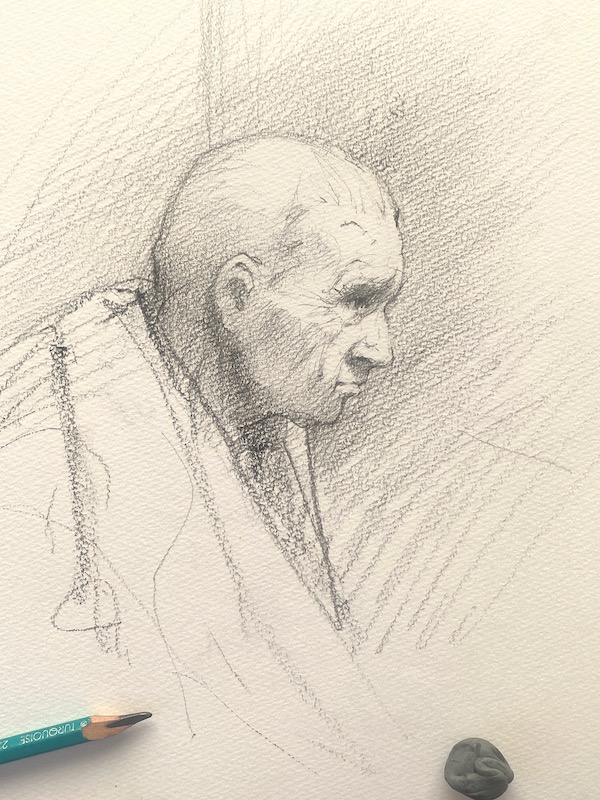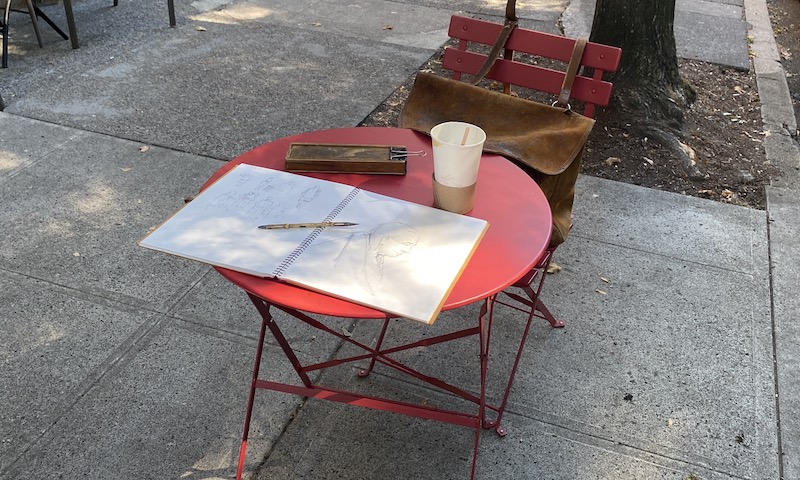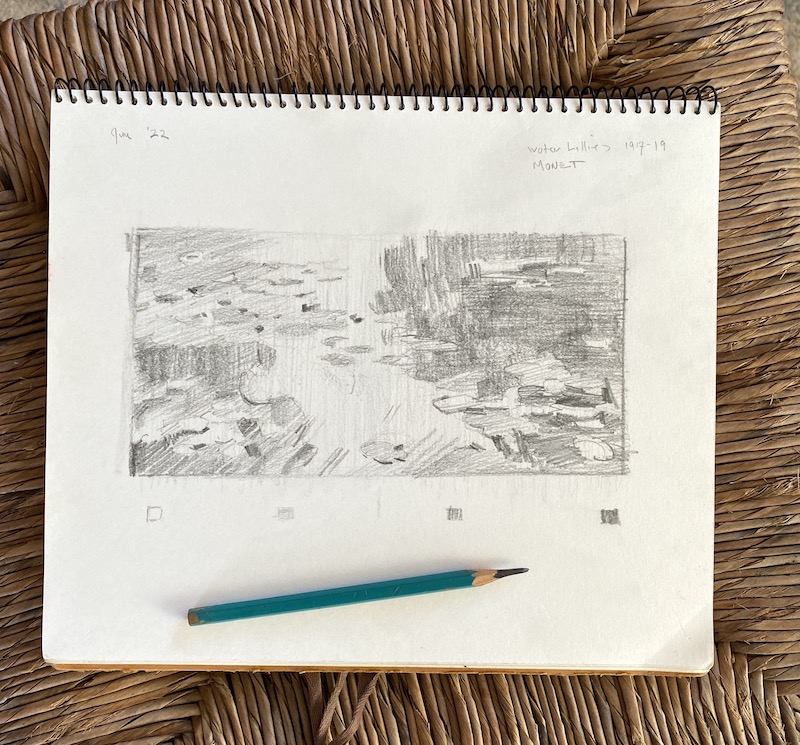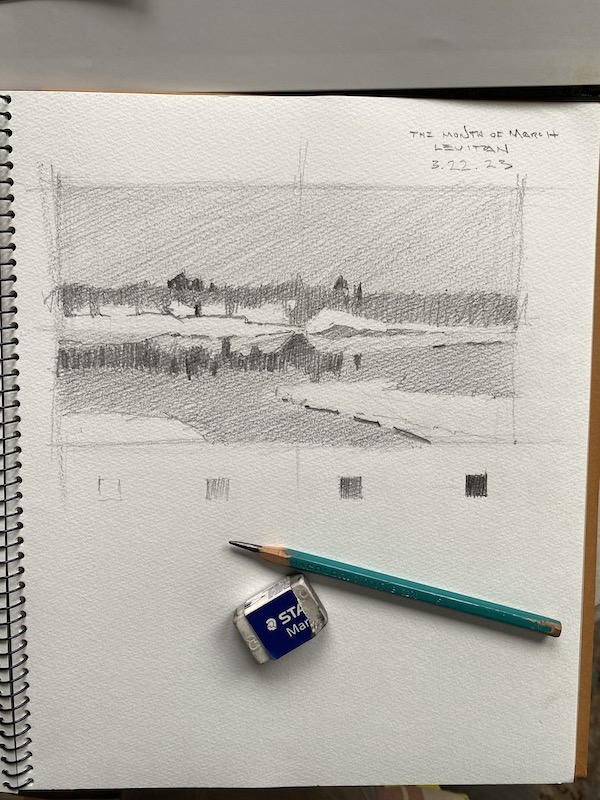
I was recently on a visit to Portland, Oregon, which is my hometown. I’d planned to hit the local art museum, where I’d also attended art school decades earlier. As things worked out, taking the bus for my Sunday morning visit was easiest, and an idea that I looked forward to.
Being an experienced public transit guy, I’ve benefitted from the variety of experiences I’ve had on subways, trains and buses. This includes uncounted hours of sketching in public transit…which ties in with my Rembrandt interest. So many of his drawings emanated from his solo experiences walking and simply observing the everyday life which surrounded him.
So, the story is that I climbed aboard a city bound bus, sparsely occupied. I had a small handful of fellow passengers and a driver who was all business, but approachable. I checked with him about my destination, he confirmed I was in the right place. Finding a seat facing the front of the bus, I was immediately next to the seating reserved for the elderly and handicapped that face the aisle. Because I’m feeling a bit outgoing this morning, I eventually start a chat with a fellow about my age across the aisle. It’s just pleasant small talk, but l feel at home back in Portland again.
As our trip to the city center continues, we stop and I sense a bit of change in the mood as a hard-luck sort of fellow comes aboard. Wrapped in what looks like a discarded cargo blanket, and with only the bare essentials of decrepit shoes and shorts otherwise, the small, haggard fellow takes the seat directly in from of me.
Because it’s Portland, it’s become a normal sight, and this man seems utterly beyond concern with anyone’s reaction. All the same I could feel our fellow passengers tighten up a bit.
Since I’d already broken the ice with my other neighbor, and knowing that I only have another fifteen minutes ride ahead, I decide to ask the man in the blanket how things are going today. Glancing my way, he remarks that he’d been better, but I think he appreciated being addressed politely. Positioned as we were, I studied the fellow a bit, who was sitting in perfect profile. I noticed a recent patient wristband which probably accompanied the sutures on his forehead.
Somehow, momentary mutual trust was established, and so I mentioned that I was a visitor to Portland, but also a native. He was a native as well, and I ventured to ask if he’d attended high school in Portland. Grant High School, he responded. I then mentioned that I’d gone to Jackson High, and asked which years he’d attended Grant. He was class of ’75, I was class of ’74. He then mentioned having wrestled against Jackson. I asked how he’d done, and he said he’d won…and had gone on to place well in the state championships. He smiled a bit and seemed happy at the momentary recollection. But just as quickly he returned to his present reality.
Coming near the end of the my ride, I managed to locate the only cash I had, a single dollar bill. I folded it my hand, but as it turned out he signaled to get off the bus first. Before he rose to leave, I managed to explain that as a graduate of Jackson High School, I probably had known someone he’d wrestled against. Therefore, in consideration of the ass-whooping he’d delivered, some royalty payments were likely overdue. I apologized for the meager offering, but he accepted it. Within a moment of having left the bus, I caught a glimpse of him putting the money to immediate use with a drug dealer who’d set up on the sidewalk.
I now suppose this fellow, if he didn’t get massive help, was a dead man walking. Perhaps I brought a little joy into his bus ride, or contributed to his decline. But by the time I’d gotten to my destination a few minutes later, I’d decided I could at least attempt a drawing, a souvenir of a chance encounter, since I’d been studying him closely.

I found a table and a cup of coffee on a sidewalk near the art museum, and set to work. General to specific, overhead lighting. I drew a skull in pencil, and added features as I worked. He reminded me of some of my Scandinavian relatives, naturally small and slender, with similar construction in the features. I put that familiarity to use.
The final image evolved over time. I’d pull out the drawing days later and shift something, or darken or lighten.
One interesting aside was that while I was working at the table above, a really charged-up (drugs) fellow came by and wanted to see what I was drawing. I showed him and he complimented the drawing. And as he did, I looked at his eyes, which had been giving me problems in my drawing. And I saw the same look in his eyes that my drawing lacked. It’s something I recognized from the photos of holocaust survivors or POW’s I’d seen. A stare, but a hollow one, if that makes any sense.
Lorem ipsum dolor sit amet, consectetur adipiscing elit. Ut elit tellus, luctus nec ullamcorper mattis, pulvinar dapibus leo.




